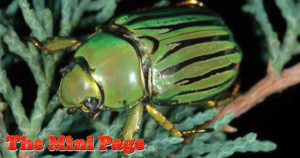
AMP | Kids is proud to partnr with The Mini Page, celebrating over 50 years of providing engaging and fun learning opportunities to young readers across the country. This feature was originally syndicated in newspapers the week of February 29 – March 6, 2020. It is distributed digitally here with permission from Andrews McMeel Syndication. Enjoy and share with the young learners in your life!
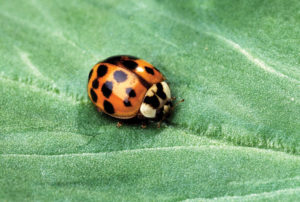
Asian lady beetle
It won’t be long before you’re playing outside, watching lightning bugs sparkling at night or ladybugs crawling on a leaf. You may not realize it, but those friendly bugs are beetles.
Beetles are insects with hardened wing covers and chewing mouth parts. One out of every four species, or type, of living creature on Earth is a beetle.
Wing covers
Beetles’ hardened wing covers protect them like a suit of armor. These help keep beetles safe from predators, or animals that want to eat them. Wing covers also trap moisture inside beetles’ bodies. This helps keep them from drying out.
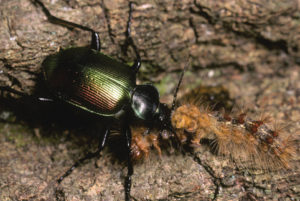
The caterpillar hunter beetle helps control the gypsy moth caterpillar, which destroys U.S. forests.
Chewing mouth parts
Beetles’ mouths are designed for chewing and biting. They might use their powerful mouths to grab their prey, bite it and chew it up. This is different from many other insects that suck up their food instead.
Beetles may also use their strong mouth parts to chew holes in trees, crops and even carpets.
Billions of beetles
Experts say there are about 400,000 different species of beetles. They are on every continent except Antarctica.
The warm, wet tropics are especially rich habitats for beetles. More species live there than anywhere else. However, people are destroying the tropical forests where beetles live so quickly that there are probably hundreds of thousands more species we may never discover.
An entire species of beetle can live on one single tree and nowhere else. Or one species may live only on the side of one mountain. Since many beetles can live in only one habitat, such as a tree, they can’t survive when they lose their homes.
Sacred scarabs
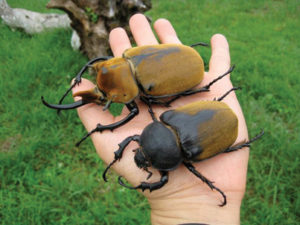
These huge elephant beetles are a type of scarab.
Ancient Egyptians wore scarabs (SKA-rubs) as holy charms. Models of scarabs were used to replace the heart in mummies. Scarabs stand out in the world of beetles. Many have bright metallic colors or giant horns.
Pests and helpers
Many beetles do a lot of damage. They can destroy forests and crops. Others help people. Some, such as ladybugs, eat other insect pests. Some people even eat beetles!
Many different types of beetles feed on and bury dead animals, recycling them. In fact, scientists use beetles to clean the flesh off animal skeletons they want to study.
The important scarab
Scarabs make up one family of beetles, with about 35,000 species. Scarabs are nature’s recyclers. They eat dung, or poop, and dead animals and plants.
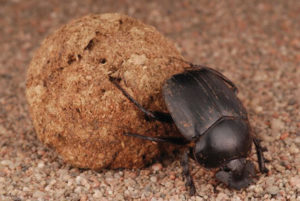
This dung beetle rolls a ball of poop.
Dung beetles like waste from animals such as camels and cattle. They pull it down under the ground and lay their eggs in it. When the beetles hatch, they eat the dung, recycling it. If dung beetles didn’t recycle waste, it would stay for years, smothering the grass and plant life.
In one pile of elephant poop in Africa, there might be 80 different species of dung beetles.
Resources
On the Web:
At the library:
-
Bonkers About Beetles by Owen Davey
-
Beetles by Trudi Strain Trueit
Teachers: For standards-based activities to accompany this feature, visit Andrews McMeel Syndication. And follow The Mini Page on Facebook!
